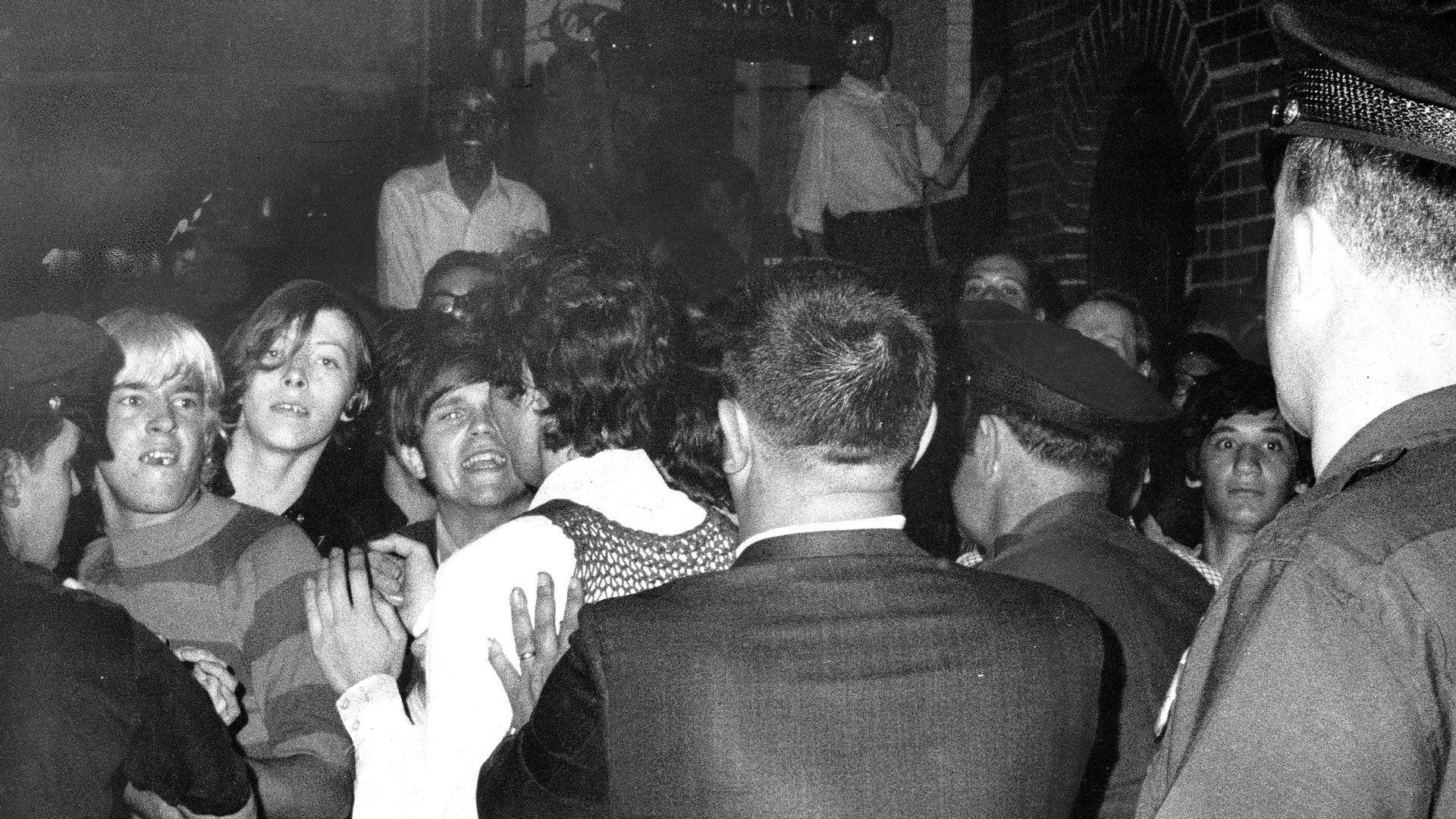Sometime after midnight on June 28, 1969, in what is now regarded by many as history’s first major protest on behalf of equal rights for LGBTQ people, a police raid of the Stonewall Inn—a popular gay club located on New York City's Christopher Street—turns violent as patrons and local sympathizers begin rioting against the authorities.
Although the police were legally justified in raiding the club, which was serving liquor without a license, New York’s gay community had grown weary of the police department targeting gay clubs, many of which had already been closed.
Soon, the crowd began throwing bottles at the police. The protest spilled over into the neighboring streets, and order was not restored until the deployment of New York’s riot police sometime after 4 a.m.
The Stonewall Riots were followed by several days of demonstrations in New York and was the impetus for the formation of the Gay Liberation Front as well as other gay, lesbian and bisexual civil rights organizations. The next year, in 1970, New York's first official gay pride parade set off from Stonewall and marched up 6th Avenue. June was later designated LGBTQ Pride Month to commemorate the uprising.
In 2019, the New York Police Department formally apologized for its role in the Stonewall Riots, and for the discriminatory laws that targeted gay people.
The movement for LGBTQ rights in the United States dates at least as far back as the 1920s, when the first documented gay rights organization was founded. Since then, various groups have advocated for LGBTQ rights and the movement accelerated in the wake of the Stonewall Riots of 1969. Below is a list of surprising facts about Stonewall and the struggles and milestones of the gay rights movement.
1. The first documented U.S. gay rights organization was founded in Chicago in 1924.
Henry Gerber, a German immigrant, founded the Society for Human Rights, the first documented gay rights organization in the United States. During his U.S. Army service in World War I, Gerber was inspired to create his organization by the Scientific-Humanitarian Committee, a “homosexual emancipation” group in Germany.
Gerber’s small group published a few issues of its newsletter “Friendship and Freedom,” the country’s first gay-interest newsletter. Police raids forced the group to disband in 1925. But 90 years later, the U.S. government designated Gerber’s Chicago house a National Historic Landmark.
2. The pink triangle was co-opted from the Nazis and reclaimed as a badge of pride.
Before the pink triangle became a worldwide symbol of gay power, it was intended as a badge of shame. In Nazi Germany, a downward-pointing pink triangle was sewn onto the shirts of gay men in concentration camps—to identify and further dehumanize them.
In 1972, The Men with the Pink Triangle, the first autobiography of a gay concentration camp survivor, was published. The next year, post-war Germany’s first gay rights organization, Homosexuelle Aktion Westberlin (HAW), reclaimed the pink triangle as a symbol of liberation.
3. Three years before Stonewall, a protest for gay rights started in another New York City bar.
In 1966, three members of the Mattachine Society, an early organization dedicated to fighting for gay rights, staged a “sip-in”—a twist on the “sit-in” protests of the 1960s. The trio visited taverns, declared themselves gay, and waited to be turned away so they could sue.
Although the State Liquor Authority initially denied the men's discrimination claim, the Commission on Human Rights argued that gay individuals had the right to be served in bars. For the next few years in New York, the gay community felt empowered. Police raids became less commonplace and gay bar patrons, while still oppressed in society, had recovered their safe havens.
4. The Mafia ran gay bars in NYC in the 1960s.
It was an unlikely partnership. But between New York’s LGBTQ community in the 1960s being forced to live on the outskirts of society and the Mafia’s disregard for the law, the two became a profitable, if uneasy, match.
The State Liquor Authority and the New York Police Department regularly raided bars that catered to gay patrons. Where the law saw deviance, the Mafia saw a golden business opportunity. A member of the Genovese family, Tony Lauria, a.k.a. “Fat Tony,” purchased the Stonewall Inn in 1966 and transformed it into a gay bar and nightclub.
To operate the Stonewall and its other gay bars, the Mafia bribed the NYPD to turn a blind eye to the “indecent conduct” occurring behind closed doors. They also blackmailed wealthy gay patrons by threatening to “out” them.
5. Police used a 19th-century masquerade law to arrest people dressed in drag.
In the 1940s, ‘50s and ‘60s, LGBTQ people were regularly arrested for violating what became known as the three-article rule—or the three-piece law. The rule stipulated that a person was required to wear at least three gender-appropriate articles of clothing to avoid arrest for cross-dressing. It was referenced everywhere—including in reports about arrests in Greenwich Village in the weeks and months leading up to the 1969 Stonewall Riots.
The problem is, the law technically never existed.
Instead, accounts suggest that police generally used old, often unrelated laws to target LGBT people. In New York, a law commonly used against the LGBTQ community dates to 1845 and was originally intended to punish rural farmers, who had taken to dressing like Native Americans to fight off tax collectors.
6. On the night of the Stonewall Riots, police barricaded themselves inside the bar.
After midnight on an unseasonably hot Friday night in 1969, the Stonewall Inn in New York City’s Greenwich Village was packed when police officers entered the bar. As they began making arrests, patrons started to resist and push back.
What ensued was an uprising that would launch a new era of resistance and revolution.
Close to 4 a.m. on June 28, 1969 the mob of protestors outside the Stonewall had grown so large and unruly that the original NYPD raiding party retreated into the Stonewall itself and barricaded themselves inside. Some rioters used a parking meter as a battering ram to break through the door; others threw beer bottles, trash and other objects, or made impromptu firebombs.
No one died or was critically injured on the first night of the Stonewall Riots, though a few police officers reported injuries.





